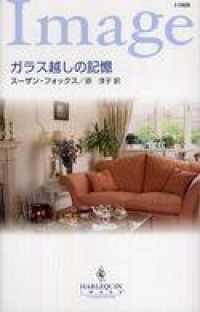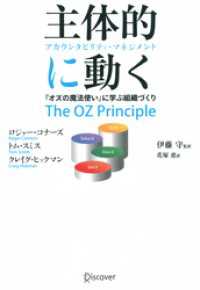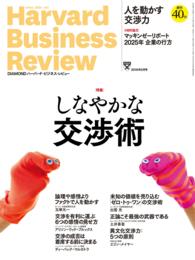- ホーム
- > 洋書
- > 英文書
- > History / World
Full Description
Robert J. Bull began the excavation of a vault on the south side of the Inner Harbour of Caesarea Maritima, Israel. The vault was one of a row of warehouses built to store goods unloaded from the harbour built by Herod the Great.
Begins with an introduction to the excavation process; the study of the stratigraphy (analysis of the order and position of layers of archaeological remains) considers the later excavations of the adjoining vault, and includes new photographs, plans, and section drawings. The original construction phase, the vault's transformation into a Mithraeum (a sanctuary or temple of the god Mithras), abandonment, and final use as a "charnel house" are discussed in detail.
Also, includes detailed studies of the fragmentary wall paintings depicting Mithraic iconography, and of the medallion found inside the vault, in the context of the practices of Mithraism in the ancient world. The reconstruction of the ceiling splay and the interpretation in terms of astrological symbolism important to Mithraism are also detailed.
A second volume describing the structure of the vault and the material culture found is planned.
Contents
List of Illustrations
List of Tables
Preface
Acknowledgements
Abbreviations
Chapter 1 - Introduction and Background
A. The Site: Physical Setting and Early History
B. The Backstory: Early Challenges for the Harvard Expedition
C. The Harvard Expedition: Excavation Strategy, Methods, and Ensuing Challenges
1. 1908 Fieldwork
2. 1909 Fieldwork
3. 1910 Fieldwork
D. Summary
Chapter 2 - Horizontal Axis: The Ostraca Building's Original Footprint and Surrounding Area
A. The Ostraca House
1. Wall A: Ahab's "Main Wall"
2. The Ostraca House: Entrance Halls, Storerooms, and Eastern Corridors (Long-Rooms)
3. Reconstructions
4. Later Additions (?)
B. The Osorkon House
C. Problems North and East of the Ostraca and Osorkon Houses
D. Summary
Chapter 3 - Vertical Axis: The Ostraca Building's Complex Depositional History
A. Stratigraphic Analysis: Summary of Sections Published by the Harvard Expedition
B. Stratigraphic Analysis: Discussion of Sections Relevant to the Ostraca House
1. Principal Longitudinal Section CD
2. Principal Lateral Section GH
3. Subsidiary Lateral Section AB
C. Summary
Chapter 4 - Ceramic Considerations
A. The Harvard Excavations and the Joint Expedition: Collating the Data
B. Reisner's Presentation of Pottery: A Meager Repertoire
C. The 1910 Ostraca: Spatial Distribution
D. The 1910 Ostraca: Typological Notes
E. The 1910 Ostraca-related Pottery: Typological Notes
F. The 1910 Ostraca and Ostraca-related Pottery: Comparative Ceramic Analysis
1. Epigraphic Pottery
2. Bowl Types Representing Parallels for Ostraca Pottery Forms
3. Non-epigraphic Pottery from the Same Findspots as the Ostraca
4. Comments on Some Jar Types Associated with Ostraca Pottery Forms
G. Summary
Chapter 5 - The Samaria Ostraca and Modern Scholarship
Chapter 6 - Back to the Backstory: The Characters and Concerns behind the Harvard Expedition to Samaria
Appendix A - Ostraca: Provenance Data and Vessel Descriptions
Appendix B - Ostraca: Sequence of Discovery
Appendix C - Non-epigraphic Pottery with Provenance Data Matching those of the Ostraca
Appendix D - D. G. Lyon's Report to the President of Harvard University for the Academic Year 1898-1899, Showing the Financial Generosity of Jakob Heinrich Schiff
Appendix E - Reisner's Field Drawings of Selected Ostraca
Plates
Bibliography
Indices
Biblical References
Author Index
Subject Index
-

- 電子書籍
- ガラス越しの記憶 ハーレクイン
-

- 電子書籍
- 【フルカラー】柳原くんはセックス依存症…
-

- 電子書籍
- 主体的に動く アカウンタビリティ・マネ…
-

- 電子書籍
- DIAMONDハーバード・ビジネス・レ…
-

- 電子書籍
- 絶対知っておきたい! 「躁うつ病」休職…



